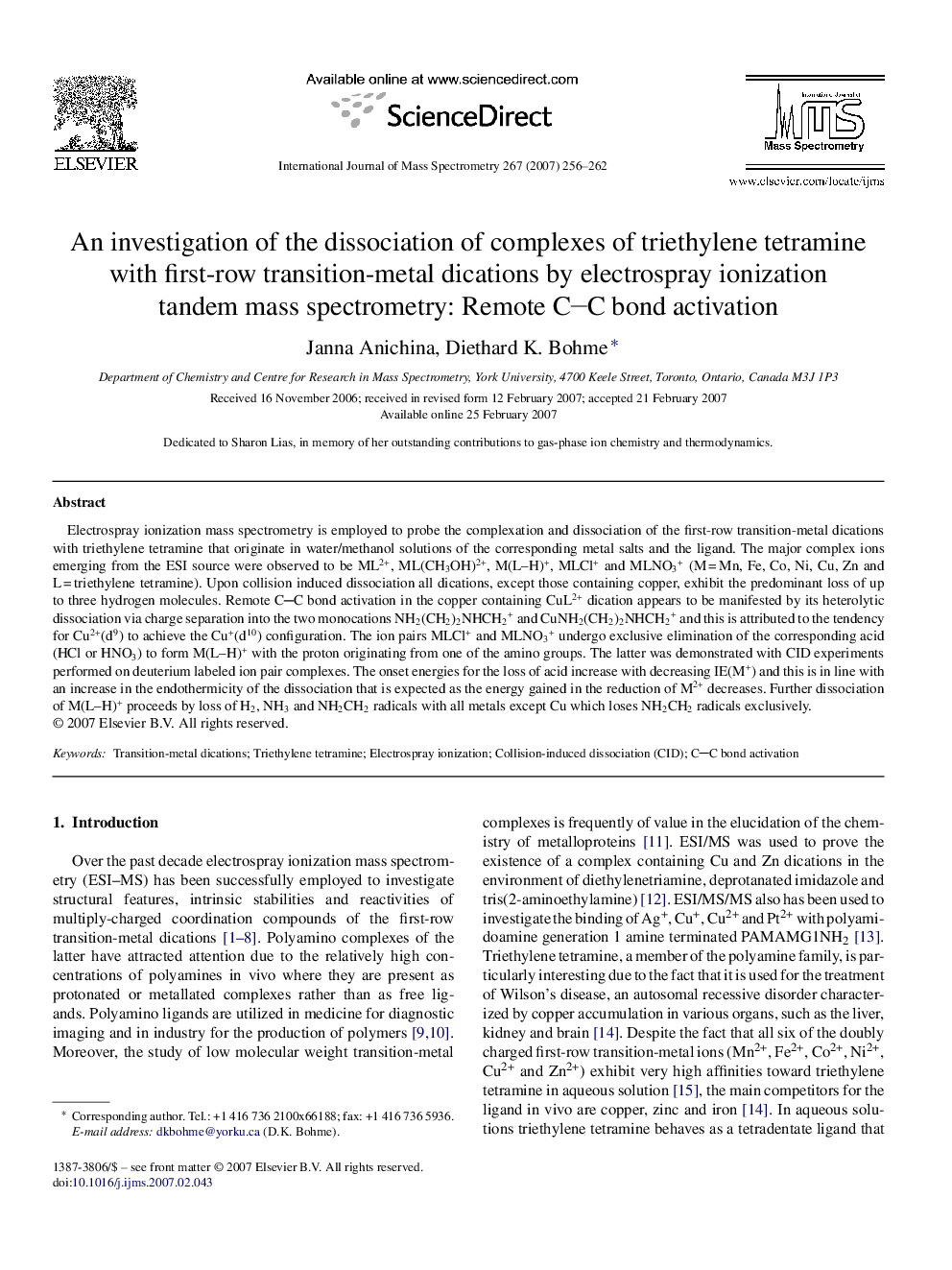| Article ID | Journal | Published Year | Pages | File Type |
|---|---|---|---|---|
| 1193371 | International Journal of Mass Spectrometry | 2007 | 7 Pages |
Electrospray ionization mass spectrometry is employed to probe the complexation and dissociation of the first-row transition-metal dications with triethylene tetramine that originate in water/methanol solutions of the corresponding metal salts and the ligand. The major complex ions emerging from the ESI source were observed to be ML2+, ML(CH3OH)2+, M(L–H)+, MLCl+ and MLNO3+ (M = Mn, Fe, Co, Ni, Cu, Zn and L = triethylene tetramine). Upon collision induced dissociation all dications, except those containing copper, exhibit the predominant loss of up to three hydrogen molecules. Remote CC bond activation in the copper containing CuL2+ dication appears to be manifested by its heterolytic dissociation via charge separation into the two monocations NH2(CH2)2NHCH2+ and CuNH2(CH2)2NHCH2+ and this is attributed to the tendency for Cu2+(d9) to achieve the Cu+(d10) configuration. The ion pairs MLCl+ and MLNO3+ undergo exclusive elimination of the corresponding acid (HCl or HNO3) to form M(L–H)+ with the proton originating from one of the amino groups. The latter was demonstrated with CID experiments performed on deuterium labeled ion pair complexes. The onset energies for the loss of acid increase with decreasing IE(M+) and this is in line with an increase in the endothermicity of the dissociation that is expected as the energy gained in the reduction of M2+ decreases. Further dissociation of M(L–H)+ proceeds by loss of H2, NH3 and NH2CH2 radicals with all metals except Cu which loses NH2CH2 radicals exclusively.
